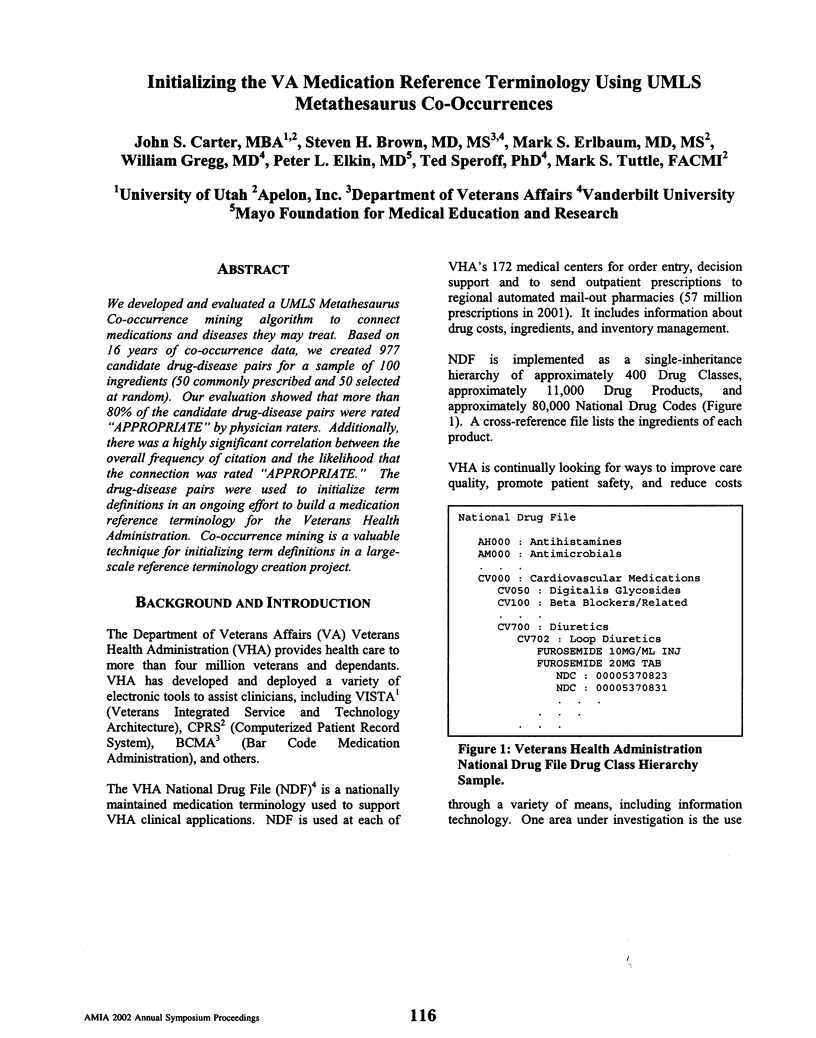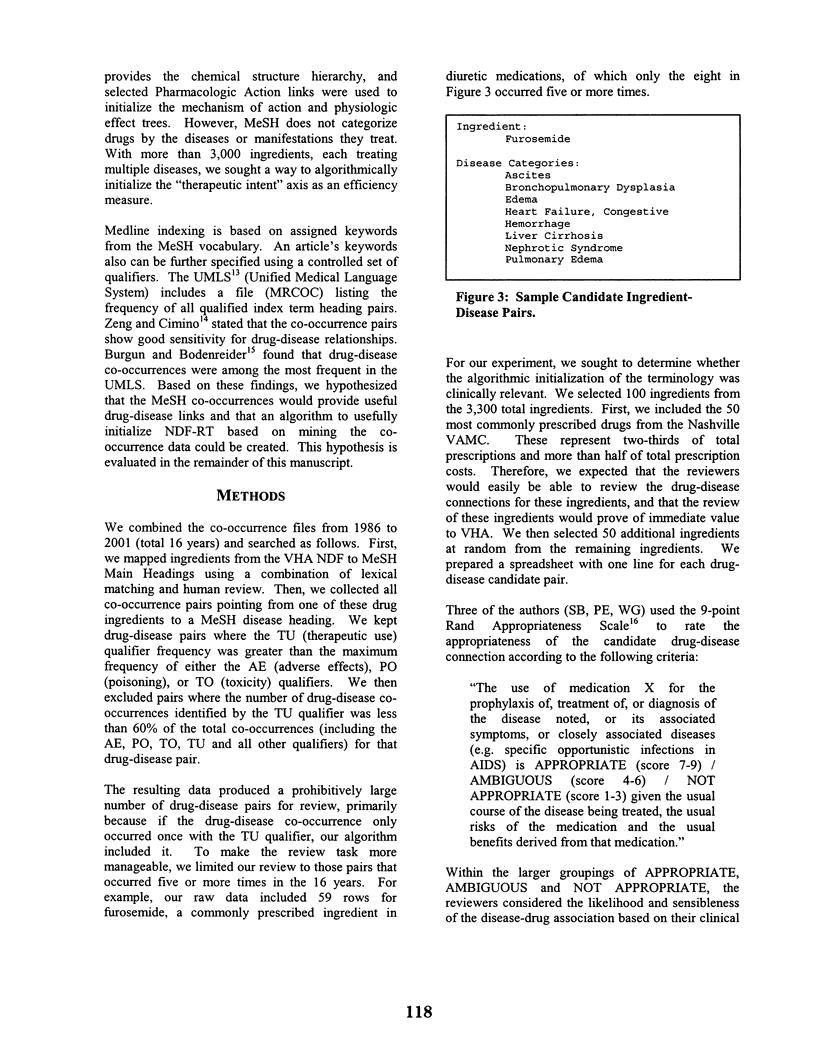Abstract
We developed and evaluated a UMLS Metathesaurus Co-occurrence mining algorithm to connect medications and diseases they may treat. Based on 16 years of co-occurrence data, we created 977 candidate drug-disease pairs for a sample of 100 ingredients (50 commonly prescribed and 50 selected at random). Our evaluation showed that more than 80% of the candidate drug-disease pairs were rated "APPROPRIATE" by physician raters. Additionally, there was a highly significant correlation between the overall frequency of citation and the likelihood that the connection was rated "APPROPRIATE." The drug-disease pairs were used to initialize term definitions in an ongoing effort to build a medication reference terminology for the Veterans Health Administration. Co-occurrence mining is a valuable technique for initializing term definitions in a large-scale reference terminology creation project.
Full text
PDF




Selected References
These references are in PubMed. This may not be the complete list of references from this article.
- Burgun A., Bodenreider O. Methods for exploring the semantics of the relationships between co-occurring UMLS concepts. Stud Health Technol Inform. 2001;84(Pt 1):171–175. [PMC free article] [PubMed] [Google Scholar]
- Cimino J. J., Clayton P. D., Hripcsak G., Johnson S. B. Knowledge-based approaches to the maintenance of a large controlled medical terminology. J Am Med Inform Assoc. 1994 Jan-Feb;1(1):35–50. doi: 10.1136/jamia.1994.95236135. [DOI] [PMC free article] [PubMed] [Google Scholar]
- Cimino J. J. Desiderata for controlled medical vocabularies in the twenty-first century. Methods Inf Med. 1998 Nov;37(4-5):394–403. [PMC free article] [PubMed] [Google Scholar]
- Johnson Connie L., Carlson Russell A., Tucker Chris L., Willette Candice. Using BCMA software to improve patient safety in Veterans Administration Medical Centers. J Healthc Inf Manag. 2002 Winter;16(1):46–51. [PubMed] [Google Scholar]
- Lau L. M., Johnson K., Monson K., Lam S. H., Huff S. M. A method for the automated mapping of laboratory results to LOINC. Proc AMIA Symp. 2000:472–476. [PMC free article] [PubMed] [Google Scholar]
- Lau L. M., Lam S. H. Applying the desiderata for controlled medical vocabularies to drug information databases. Proc AMIA Symp. 1999:97–101. [PMC free article] [PubMed] [Google Scholar]
- Lipscomb C. E. Medical Subject Headings (MeSH). Bull Med Libr Assoc. 2000 Jul;88(3):265–266. [PMC free article] [PubMed] [Google Scholar]
- Merrick N. J., Fink A., Park R. E., Brook R. H., Kosecoff J., Chassin M. R., Solomon D. H. Derivation of clinical indications for carotid endarterectomy by an expert panel. Am J Public Health. 1987 Feb;77(2):187–190. doi: 10.2105/ajph.77.2.187. [DOI] [PMC free article] [PubMed] [Google Scholar]
- Rector A. L. Thesauri and formal classifications: terminologies for people and machines. Methods Inf Med. 1998 Nov;37(4-5):501–509. [PubMed] [Google Scholar]
- Zeng Q., Cimino J. J. Automated knowledge extraction from the UMLS. Proc AMIA Symp. 1998:568–572. [PMC free article] [PubMed] [Google Scholar]


